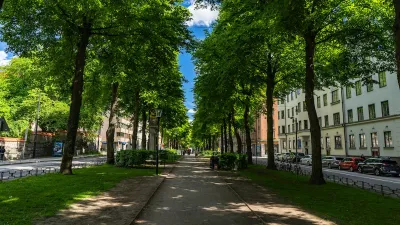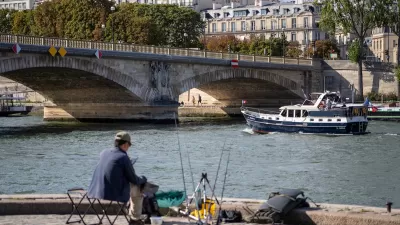No, the title of this post is not an analogy. Diane Ackerman takes a looks at the very literal ways in which cities around the world are harnessing body heat to warm up residential and office buildings.
In Paris, architects from Paris Habitat use body heat from a nearby metro station to provide under-floor heating for a public housing project. In Minnesota, the indoor temperature at the Mall of America is consistently maintained at 70 degrees by body heat, light fixtures, and sunlight. In Stockholm, engineers combine body heat from railway travelers to warm an office building close by. "Part of the appeal of heating buildings with body heat is the delicious simplicity of finding a new way to use old technology (just pipes, pumps and water)," says Ackerman, "Hands down, it's my favorite form of renewable energy."
Heating buildings with body heat can be costly in cities like Paris where buildings and Metro stations need to be adapted, but the design works especially well in Sweden where the addition of sustainable elements help save 24 percent on energy bills. "Widening their vision to embrace neighborhoods, engineers from Jernhusen, the state-owned railroad station developer, are hoping to find a way to capture excess body heat on a scale large enough to warm homes and office buildings in a perpetual cycle of mutual generosity," praises Ackerman. "Heat generated by people at home at night would be piped to office buildings first thing in the morning, and then heat shed in the offices during the day would flow to the residences in the late afternoon."
As for the United States, the body-heat design probably won't be coming soon. "Retrofitting city buildings would be costly at a time when our lawmakers are squabbling over every penny," explains Ackerman. "Also, the buildings can't be more tan 100 to 200 feet apart, or the heat is lost in transit. The essential ingredient is a reliable flux of people every day to provide the heat." She concludes, "But it's doable and worth designing into new buildings wherever possible."
FULL STORY: The Power of a Hot Body

Alabama: Trump Terminates Settlements for Black Communities Harmed By Raw Sewage
Trump deemed the landmark civil rights agreement “illegal DEI and environmental justice policy.”

Study: Maui’s Plan to Convert Vacation Rentals to Long-Term Housing Could Cause Nearly $1 Billion Economic Loss
The plan would reduce visitor accommodation by 25% resulting in 1,900 jobs lost.

Planetizen Federal Action Tracker
A weekly monitor of how Trump’s orders and actions are impacting planners and planning in America.

Wind Energy on the Rise Despite Federal Policy Reversal
The Trump administration is revoking federal support for renewable energy, but demand for new projects continues unabated.

Passengers Flock to Caltrain After Electrification
The new electric trains are running faster and more reliably, leading to strong ridership growth on the Bay Area rail system.

Texas Churches Rally Behind ‘Yes in God’s Back Yard’ Legislation
Religious leaders want the state to reduce zoning regulations to streamline leasing church-owned land to housing developers.
Urban Design for Planners 1: Software Tools
This six-course series explores essential urban design concepts using open source software and equips planners with the tools they need to participate fully in the urban design process.
Planning for Universal Design
Learn the tools for implementing Universal Design in planning regulations.
Caltrans
Smith Gee Studio
Institute for Housing and Urban Development Studies (IHS)
City of Grandview
Harvard GSD Executive Education
Toledo-Lucas County Plan Commissions
Salt Lake City
NYU Wagner Graduate School of Public Service





























